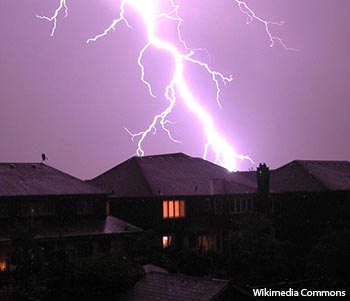
Since the 1970s, scientists have tried to use lasers to direct the electrical power of lightning. Laboratory experiments have demonstrated that plasma tracks from femtosecond laser pulses could be used to channel electrical discharges through the air, but, unfortunately, the plasma channel breaks down too quickly to be used past a few meters. Researchers from the University of Arizona, U.S.A., and Philipp University of Marburg, Germany, are using a new method to optically heat plasma filaments to extend the plasma’s lifetime (Optica, doi:10.1364/OPTICA.1.000125), making the channeling of electrical discharges through the air (including, potentially, lightning strikes) theoretically more possible.
High-peak femtosecond laser pulses leave behind a trail of dilute plasma. This plasma could be used to channel atmospheric electricity if researchers can find a way to extend the life of the plasma, which would, in turn, extend the length of the “channel.” The electron density of the plasma decays quickly because of recombination and electron attachment to neutral oxygen molecules in the air.
To slow this decay, the team optically heated the plasma filaments created by a femtosecond laser using a subsequent, external energetic laser with a nanosecond-length pulse. The heat is transferred from the electrons in the laser-field column to the gas molecules. The gas radially expands, creating a low-density channel for the electrical discharge to pass through. With this technique, they reduced electric field breakdown by up to a factor of four with a heater fluence of about 1kJ/cm2.
Previous methods for heating the conductive plasma included ohmic heating with the applied DC electric field. This new approach overcomes the limits on the maximum reach of channels associated with the nanosecond-lifetime electrons in femtosecond laser filaments.
